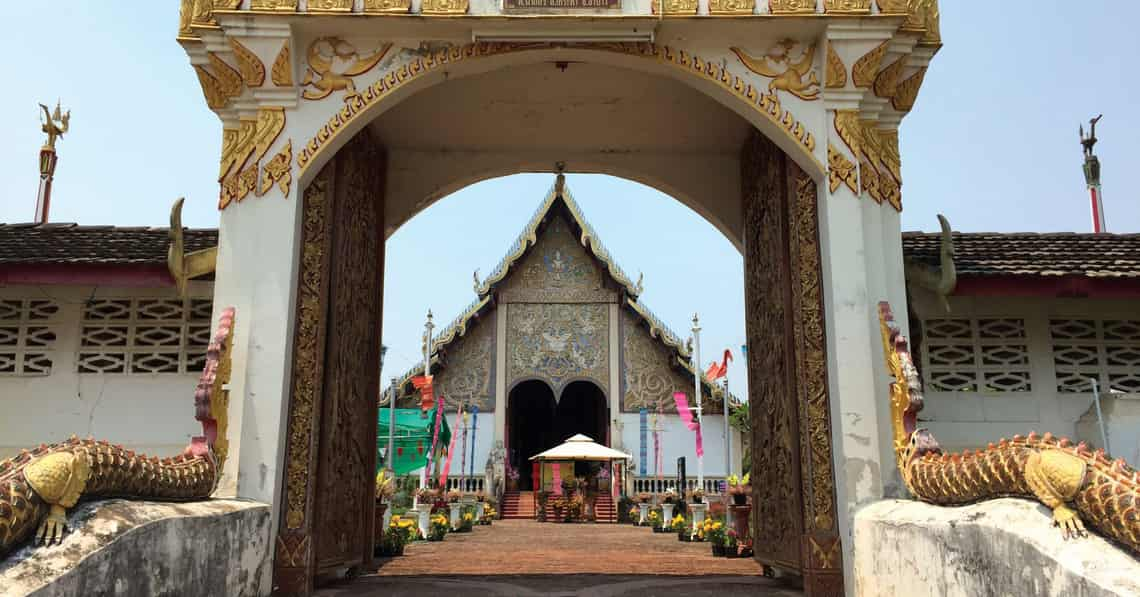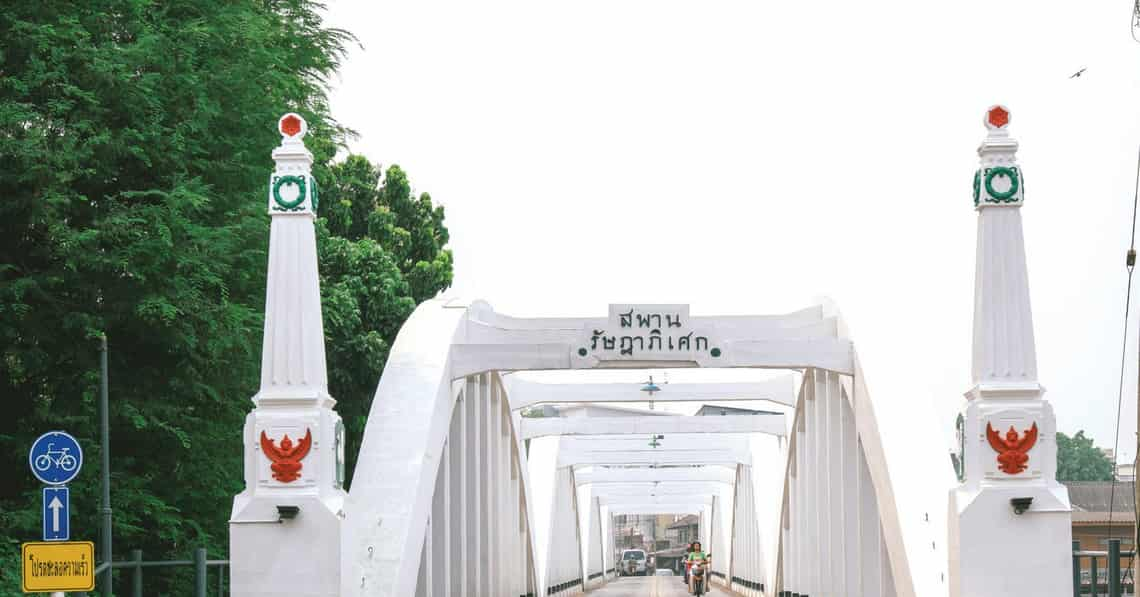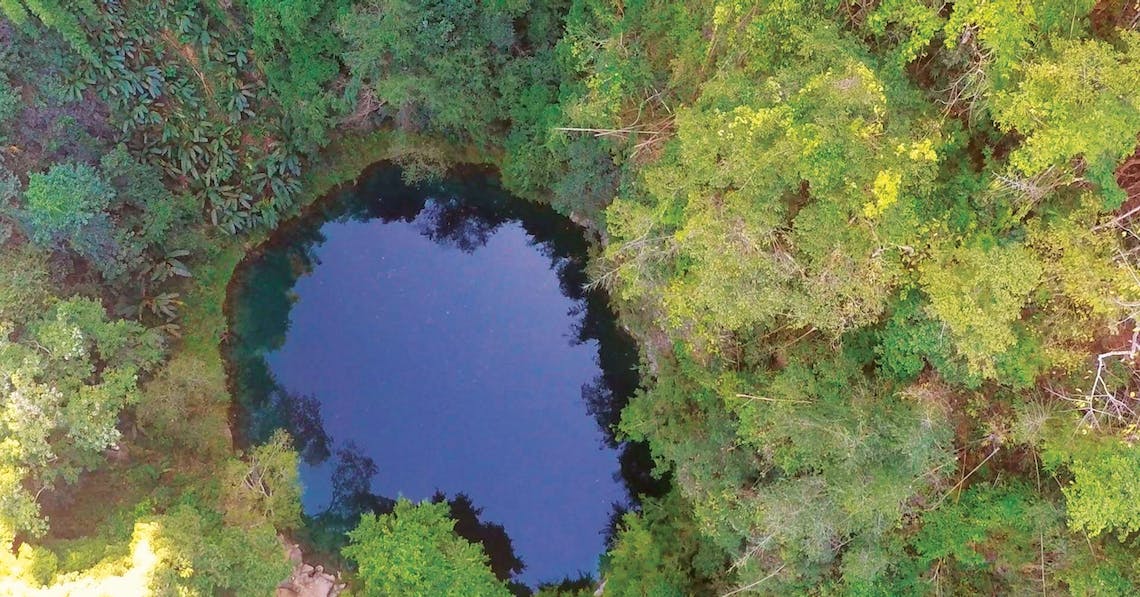When was the last time you visited Lampang? No, seriously, when did you actually visit rather than pass through on your way to Tak or Bangkok? For many, Lampang is all about ceramics and horses and carts, and frankly, once you’ve been there and done that…well.
This month, Citylife takes it upon ourselves to discover the hidden secrets and quirks of Lampang to see if we can entice you go give it another go. Sure, Lampang right now is a hotter, smokier and dryer city than Chiang Mai, and yes, its lack of public transportation is a pain (unless you want to help a mule get a day closer to heat coma) but go on, get into a car or hop onto a bike, and head to Lampang and check out some of our recent discoveries.
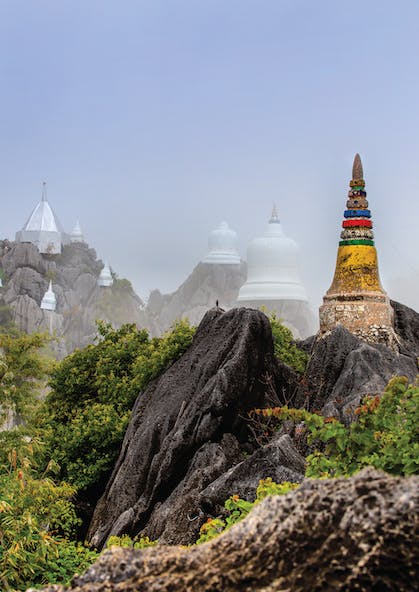
A City Stuck in Time
The city of Lampang is a sprawling network of oversized roads and confusing one way sois. In the city centre, there are your usual bars, restaurants, markets and shopping areas, all of which are strangely spread out, with residential and industrial buildings filling the gaps. Although it is in the inevitable throes of modernisation, Lampang still has a certain old world charm, with traditional Lanna architecture dominating the cityscape, accented by charming sixties style advertising billboards and store front signs.
Ratchada Bridge, is a good place to start, built in 1894 it was once the country’s longest bridge at 120 metres and is known locally as the White Bridge, though it was briefly camouflaged during WWII, which left it unscathed by the bombings. Although it’s been renovated several times (with little of the original bridge left intact), it is still an impressive display of Thai innovation during the country’s early railway era — and very Instagram friendly. Just down the road is the Kat Kong Ta weekend night market, a street lined with an interesting mix of Lanna, Burmese, Chinese as well as colonial era architecture where the usual tacky souvenirs are interspersed with quality and genuine local products. Moung Ngwe Zin building, built in 1908 by a Burmese teak merchant and now used as a gallery and coffee shop, makes for a beautiful backdrop picture of yesteryear.
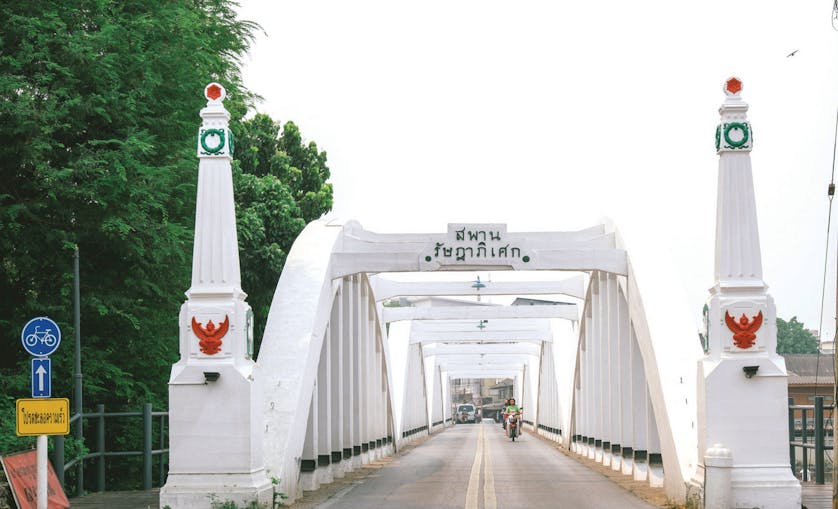
Another place to visit in the city is the beautiful Baan Sao Nak (054 227653) on Ratwatthana Road. This is truly one of Lampang’s gems, infused with nostalgia and history. Built over 100 years ago, a family still lives in parts of the house, but have opened the rest up to visitors. Old elephant seats that dignitaries past sat on are converted into dusty coffee tables with other ancient relics displayed on top. The floors creek under foot and the musty smells are strangely familiar. The name, Sao Nak (many pillars) is pretty self-explanatory when you see the 116 pillars holding up the wooden buildings.
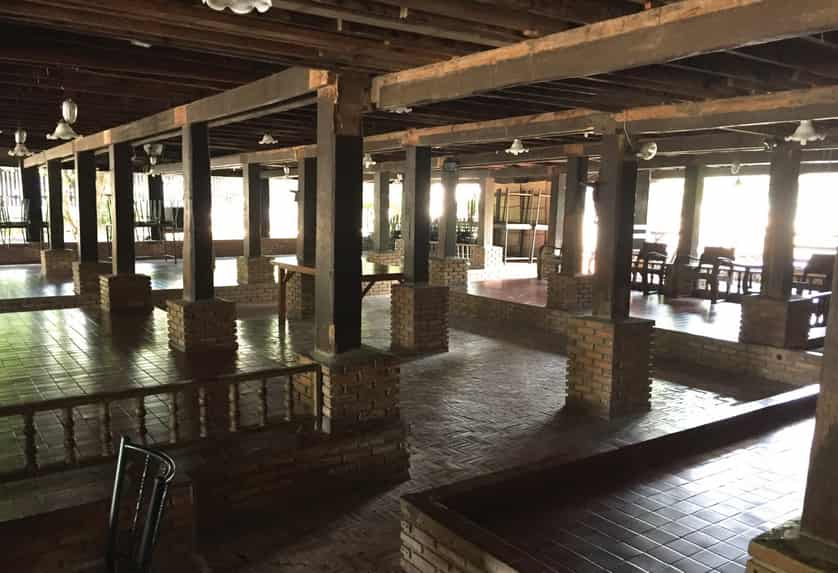
While visiting temples can become a tad tedious for those less religious, it is a must-do activity in Lampang. Sure there are the iconic temples in the city such as Wat Prathat Lampang Luang and Wat Chedi Sao where tourists flock every day — but they are hot, busy, and you don’t need us to tell you about them. Importantly, these temples don’t have a camera obscura, so why bother.
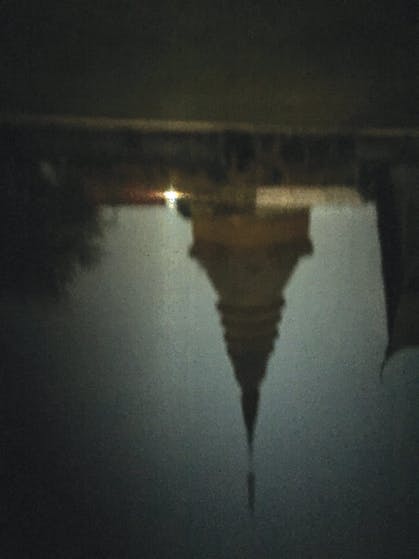
What is this obscura cam you may ask? Well, head south on the road that leads to Tak and turn off into Na Kaew to pay a visit to the lesser known Wat Phrathat Chom Ping. As you walk in, take a beeline to the right and go into the non-descript building with wooden doors and closed windows. Inside there is cloth pulled tight on a frame from where you can enjoy a camera obsucra of the temple’s stupa. An old man will probably interrupt you and just chat away aimlessly while demonstrating how the lens work while you admire a blurry upside-down image of the stupa…or your girlfriend doing silly poses. When the charades are over, go into the temple and pay your respects to the green plastic Buddha, a poorly made copy of the emerald Buddha in Bangkok, to show how much you admire religious forgery.
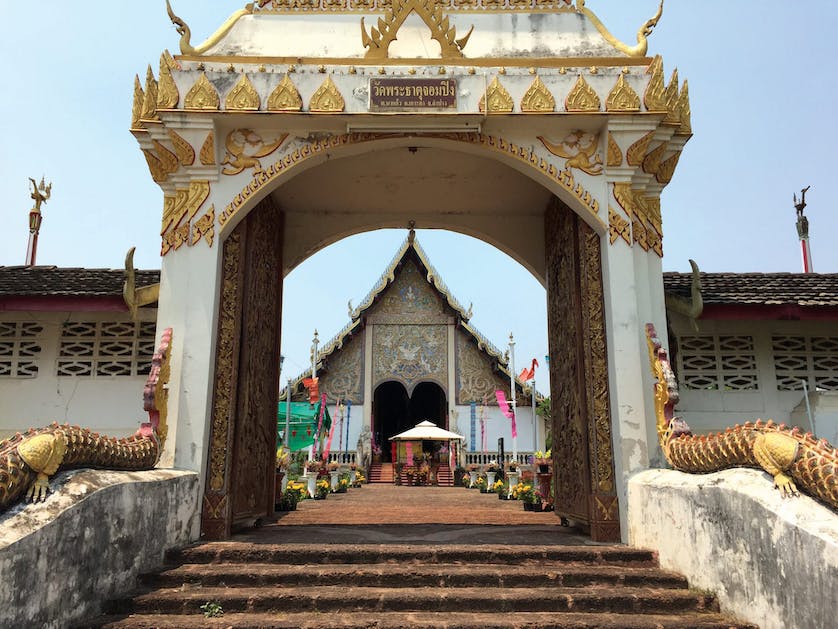
Undiscovered Wonders
Lampang is a big province, surrounded by mountains interspersed with wide open plains. As you would expect, and not unlike any other province in Thailand, Lampang also claims to have the country’s most curious and amazing natural wonders. Trend followers will head straight for the busy hot springs and such, but if you want to see the real Lampang, check out some of the province’s newly discovered and most fascinating natural (and semi-natural) wonders such as caves, mountain top temples and sacred lagoons.
Let’s be honest, when you’ve seen one cave, you’ve seen them all: damp, dark and with pungent aromas of guano. Pha Thai Cave is no exception to this rule, but what it has inside is well worth the 500 step climb up the mountain side in the blistering midday sun.
When you reach the top, the path drops down into the gaping mouth of the cave and you are awash with the cool cave breeze that almost feels like air conditioning. Entering the cave, your eyes are drawn first to your standard Buddha statue then to the graffiti on the walls that makes the cave feel slightly like an inner-city underpass. We were therefore quite surprised to find that these naughty cave doodlers include the noble hands of both Thailand’s first Prime Minister and King Rama VII. Finally, your eyes are drawn upwards, and upwards…following the ginormous body of a nine million year, and still growing, stalagmite (just to help you contextualise that — nine million years ago, termites and horses were yet to evolve). It is truly awe inspiring, but from personal experience, we recommend you keep your mouth closed when gazing in wonder. Bats tend to poop.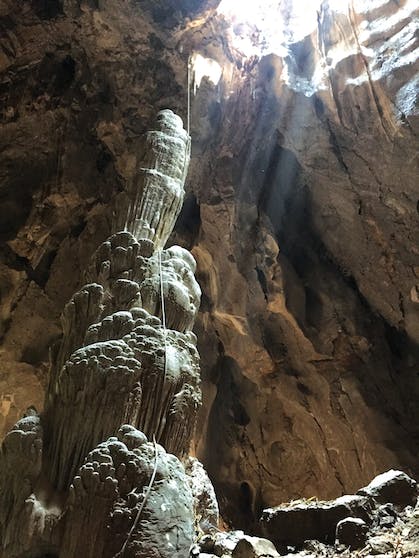
A very chatty guide can take you through the cave, pointing his torch at mere 100 year old baby stalagmites, just millimetres off the ground, turning them into glistening diamonds at a deft flick of his light. A downside to the guide’s torch antics however is when he startles the cities of bats overhead…
Even more alarming, we learned that where there are bats, there are snakes. The slithery serpents just sit and wait for a baby bat to fall from the ceiling or, better yet, climb up and play catch, resulting in the risk of both bats and snakes falling on your head. And you will leave with guaranteed bat poop tangled in your hair. Great stuff!
The Tham Pha Thai National Park is also home to a glorious emerald coloured lagoon, which when the sun hits it just so, glistens with blue undertones and accentuates the ripples of the small fish darting to and fro. According to the local folklore, the water comes straight from the heavens, which means no swimming, no drinking, and no feeding the fish, which is kind of a bummer as it is simply too inviting.
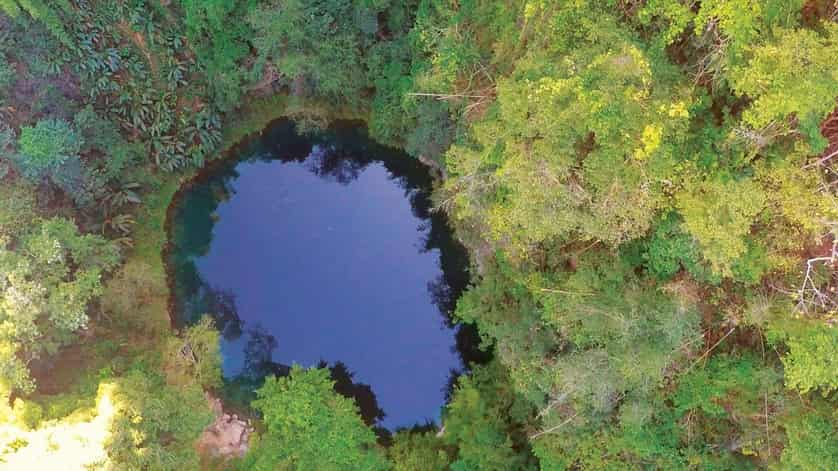
Over the other side of the mountain sits a spanking new addition to the ‘Unseen Thailand’ campaign, the snappily named Chaloem Phra Kiat Phrachomklao Rachanusorn Temple, which is rapidly becoming Lampang’s most famed destination.
High up on the tips of the mountains of Jae Hom district, is a spectacle unlike anywhere else in Thailand, with golden and white pagodas scattered atop peaks and upon precipices. When you reach ‘basecamp’, leave the car and enjoy a sweaty thirty minute trek up the hillside to one of the country’s most glorious viewing points. On your way you will pass an alleged Buddha footprint as well as a few pit stops designed for breath-catching where we were quite alarmed to encounter a few aunties and grannies, all of whom looked as though they were about to expire in the heat at any moment.
When you reach the top, take a deep breath and admire the views of peak after peak tipped with glistening stupas on sharp mountain tops that overlook the rolling Thung Thung Valley below. Also, don’t forget to take a moment to appreciate the incredible dedication that went into building these stupas over such an incredible terrain. Thirteen years ago, a revered Lampang monk led the charge and a team of 46 workers, spending two years carrying bricks, mortar, cement and every piece of the temple up the mountain each and every day until its completion. Although the temple has been there for over a decade, it is only in recent months that it has become wider known. Thanks to TAT.
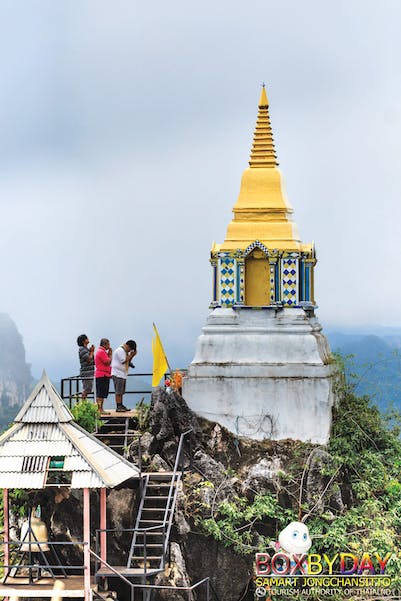
Eating Like a Local
At some point in the day you will have to eat. You may be tired from climbing a mountain or a little peckish after seeing a snake munch down a baby bat. Either way, get your teeth into some of these Lampang gems and live life like a local for a day.
Despite the slightly pungent smells of the Wang River and wafts from nearby smoky charcoal grills, the Look Chin Kieng cart near Kenneth Mackenzie School may as well be a national treasure. Hordes of people all crowd around this little stall dipping their meat ball sticks into a tiny pot of sweet chili sauce. You may wonder what brings them all down to such a place. The answer; one baht a stick. Pork balls, sausages, hearts, livers, intestines, fish balls and the allusive ‘meat’ balls are all gobbled up by one-baht spenders. A few other carts crop up from time to time, marking their territory with smells of fish sauce and papaya shreds. The hustle and bustle is quite fun, with school kids, grannies and labourers alike, all enjoying the food and the views of a beautiful orange colour bridge — again, great for Instagram.
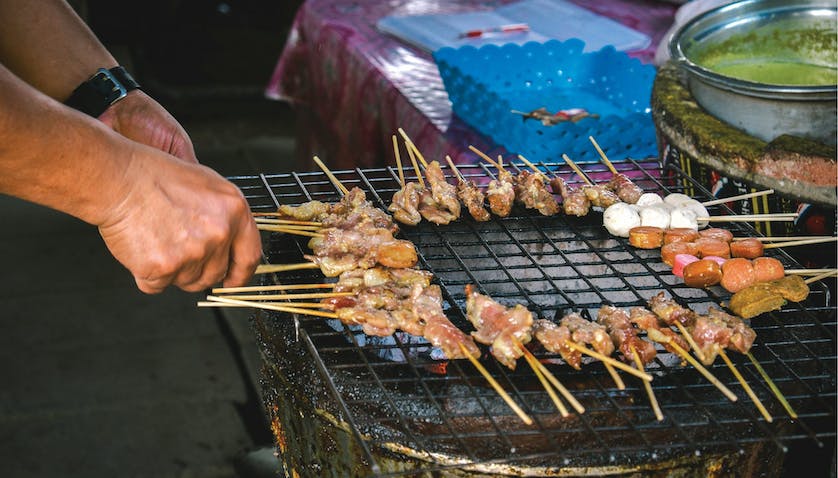
However, we all know full well that sometimes, a one baht stick of unidentified meat on a stick just doesn’t cut it. And for many of us, a super spicy bowl of noodles is exactly what is needed after a sizzling hot day. Because why not burn away your stomach lining as well as your skin? Head down to the Rod Jeb Noodle Shop — a name that simply translates to ‘painful flavours’ found just behind Central Plaza Lampang. Expect fiery stomachs and sweat pouring out of places you never knew had secretion glands.
Despite the hellish name, this little shop pulls in the crowds and is a Lampang tradition. With four levels of spiciness to choose from, starting at Jeb Noy (little hurt), all the way Jeb Pang Tai (hurts to death), in spite of a lack of disclaimers at the door, the super tasty 35 baht bowl of molten lava is worth taking the risk for.
Another location that is just plane weird is the Runway Kitchen (054 018377). Gaze towards the end of the runway and make friends with local plane spotters — yup, it’s a thing — sipping a cool beer and watching the landings and take offs just a few hundred metres away. This strange amalgamation of classic Thai provincial life and faux sophistication with a pianist on one floor playing classic jazzy tunes and private karaoke rooms on the other, is so popular that, believe it or not, you may have to book in advance. Popular times are just after sunset as both Bangkok Airways and Nok Air descend and take off.
Finish off your night with a local aperitif — a shot of homebrewed ya dong whiskey. Head into So Paya Village and ask for Uncle Tiem, an old boy who has sold ya dong for years, often fermenting his whiskey with the snakes, scorpions, geckos and centipedes he finds in his garden. We were very disturbed to find that he sometimes also uses kittens. Yes, those cute furry creatures. Uncle Tiem’s is not always open, “it depends if I catch a snake or not,” he told us, deadpanned.
At some point, your Lampang journey will be over. That means another drive up the mountain towards Chiang Mai, tooting your horn on the mountain top, bypassing Lamphun and finally slipping back into the hot smoky rose of the north. But before you start that climb up the mountain, make sure you pop into the popular roadside Kad Mae Tha Doi Kaew, the old jungle market with a weird collection of bugs, nuts that make you high, cow embryos and make-your-own ya dong kits. Stock up with some weird and wonderful treats and return to Chiang Mai truly countrified and provincial.
